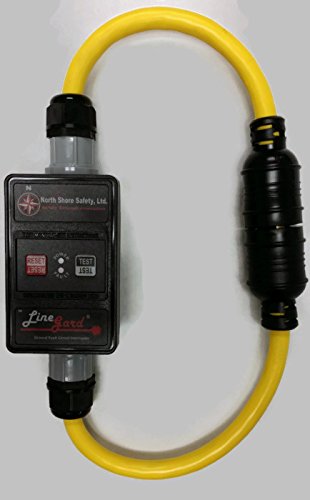Hi folks,
Just getting back into brewing after decades long absence.
I've searched all over the forum as well as have read the electric tutorial sticky but many of the thread links are gone so I don't yet have a complete picture.
Installation of a 240 v 30 amp breaker is not an option and neither do I wish to go the Spa box route. I wish to use the dryer socket, but as in many older homes the dryer and socket are, from what I can gather, the three pin NEMA 10-30 (?)

I have two Blichmann 240v Brewcommanders, each of who's power input cords are 10 gauge 3 wire, fitted with NEMA L6-30P connectors.
So there are two problems; matching the plug/socket types, as well as the GFCI issue.
For the GFCI, it has been virtually impossible to find an inline unit with this combination, although I have seen on Amazon (via North Shore Safety) an inline unit with NEMA L6-30 on both ends (link may expire at any moment).
https://www.amazon.com/North-Shore-...srs=15837011011&ie=UTF8&qid=1587494780&sr=8-6

They also sell the same unit with flying leads for almost half the price, but I really don't want to mess with finding the plugs and doing the wiring, even though I'll admit, it looks easy. I prefer to have molded plugs and avoid problems due to my own incompetence. Anyway, I reckon my life is worth more than $150.
I have to admit i was surprised that the Brewcommander uses the 3 pin configuration, but I assume the black, white and green wires are the same as the wires in the 10-30 socket and that somewhere behind the wall there is a neutral and a ground jumpered together? and therefore this GFCI is compatible as long as I can find an adapter to bridge L6-30 to 10-30?
Assuming so, I found on ebay: https://www.ebay.com/itm/30-Amp-NEM...248156?hash=item3d708c4d9c:g:OicAAOSwSudcVHuX

My question therefore is does anyone see a functional discrepancy with plugging this adapter into the dryer socket and then plugging the male end of the GFCI into the adapter? Again, I realize that this isn't the cheapest solution, but I'm not really concerned with that part of it. I only need to know if there would be any deleterious effect on the GFCI functionality with this configuration. I'm also aware that a four pin solution is superior as regards safety, however, since the Blichmann controllers use three pins I assume the additional risk is not terribly high.
Any assistance would be greatly appreciated.
Cheers,
Just getting back into brewing after decades long absence.
I've searched all over the forum as well as have read the electric tutorial sticky but many of the thread links are gone so I don't yet have a complete picture.
Installation of a 240 v 30 amp breaker is not an option and neither do I wish to go the Spa box route. I wish to use the dryer socket, but as in many older homes the dryer and socket are, from what I can gather, the three pin NEMA 10-30 (?)

I have two Blichmann 240v Brewcommanders, each of who's power input cords are 10 gauge 3 wire, fitted with NEMA L6-30P connectors.
So there are two problems; matching the plug/socket types, as well as the GFCI issue.
For the GFCI, it has been virtually impossible to find an inline unit with this combination, although I have seen on Amazon (via North Shore Safety) an inline unit with NEMA L6-30 on both ends (link may expire at any moment).
https://www.amazon.com/North-Shore-...srs=15837011011&ie=UTF8&qid=1587494780&sr=8-6

They also sell the same unit with flying leads for almost half the price, but I really don't want to mess with finding the plugs and doing the wiring, even though I'll admit, it looks easy. I prefer to have molded plugs and avoid problems due to my own incompetence. Anyway, I reckon my life is worth more than $150.
I have to admit i was surprised that the Brewcommander uses the 3 pin configuration, but I assume the black, white and green wires are the same as the wires in the 10-30 socket and that somewhere behind the wall there is a neutral and a ground jumpered together? and therefore this GFCI is compatible as long as I can find an adapter to bridge L6-30 to 10-30?
Assuming so, I found on ebay: https://www.ebay.com/itm/30-Amp-NEM...248156?hash=item3d708c4d9c:g:OicAAOSwSudcVHuX

My question therefore is does anyone see a functional discrepancy with plugging this adapter into the dryer socket and then plugging the male end of the GFCI into the adapter? Again, I realize that this isn't the cheapest solution, but I'm not really concerned with that part of it. I only need to know if there would be any deleterious effect on the GFCI functionality with this configuration. I'm also aware that a four pin solution is superior as regards safety, however, since the Blichmann controllers use three pins I assume the additional risk is not terribly high.
Any assistance would be greatly appreciated.
Cheers,




































![Craft A Brew - Safale BE-256 Yeast - Fermentis - Belgian Ale Dry Yeast - For Belgian & Strong Ales - Ingredients for Home Brewing - Beer Making Supplies - [3 Pack]](https://m.media-amazon.com/images/I/51bcKEwQmWL._SL500_.jpg)






















